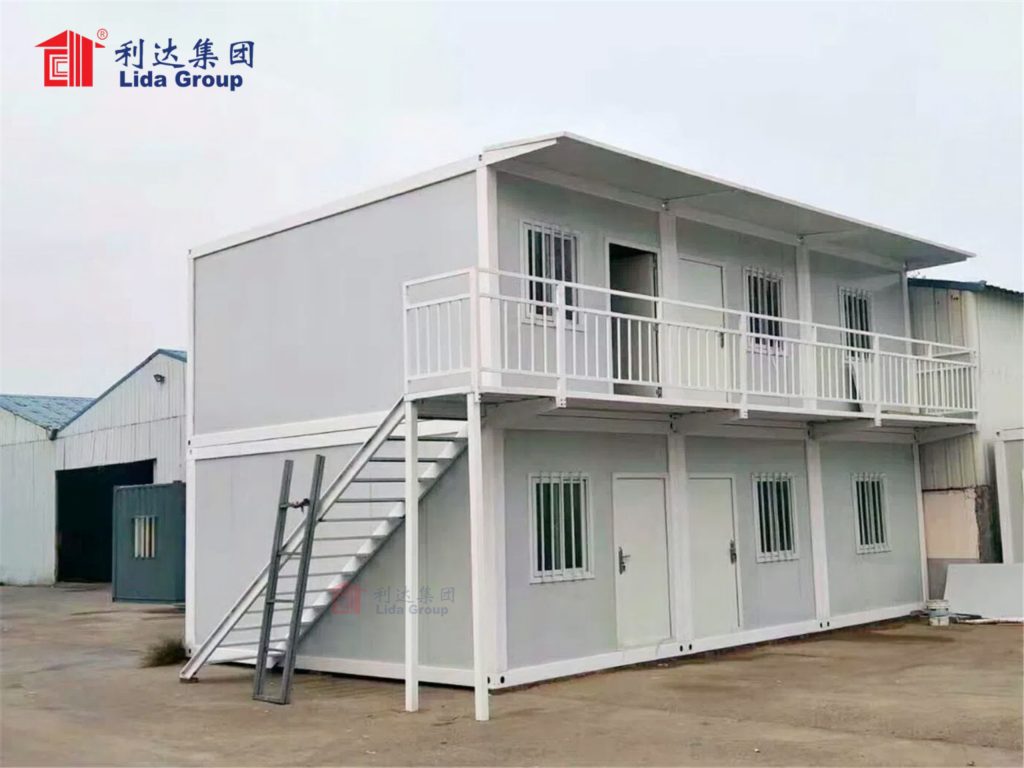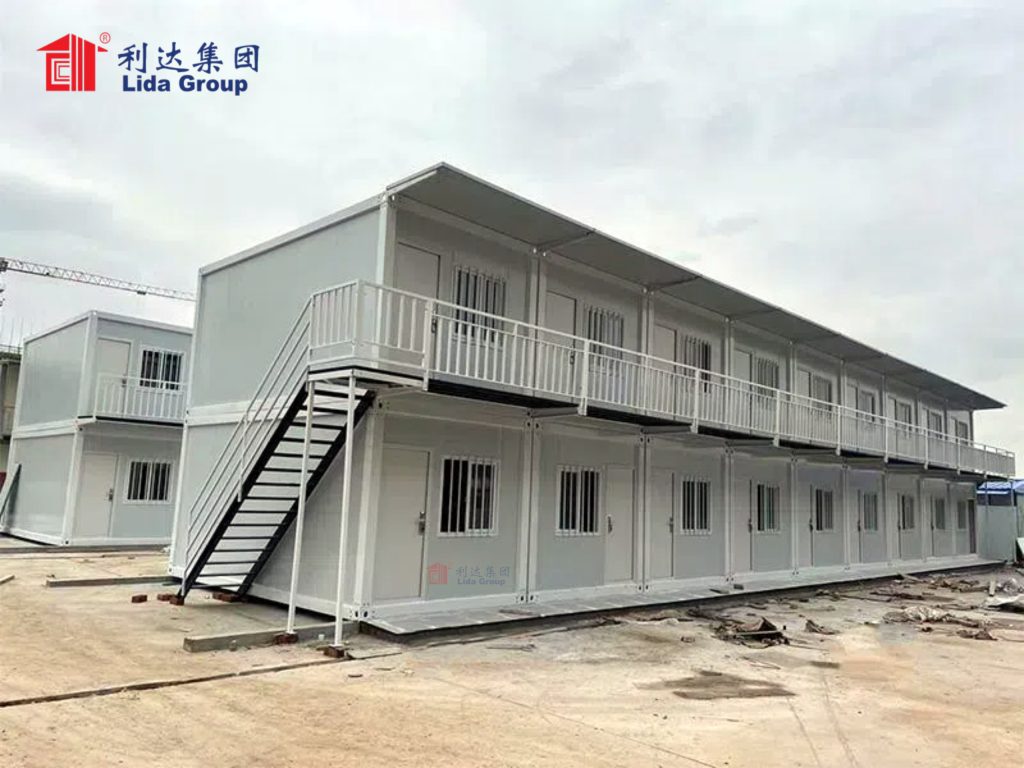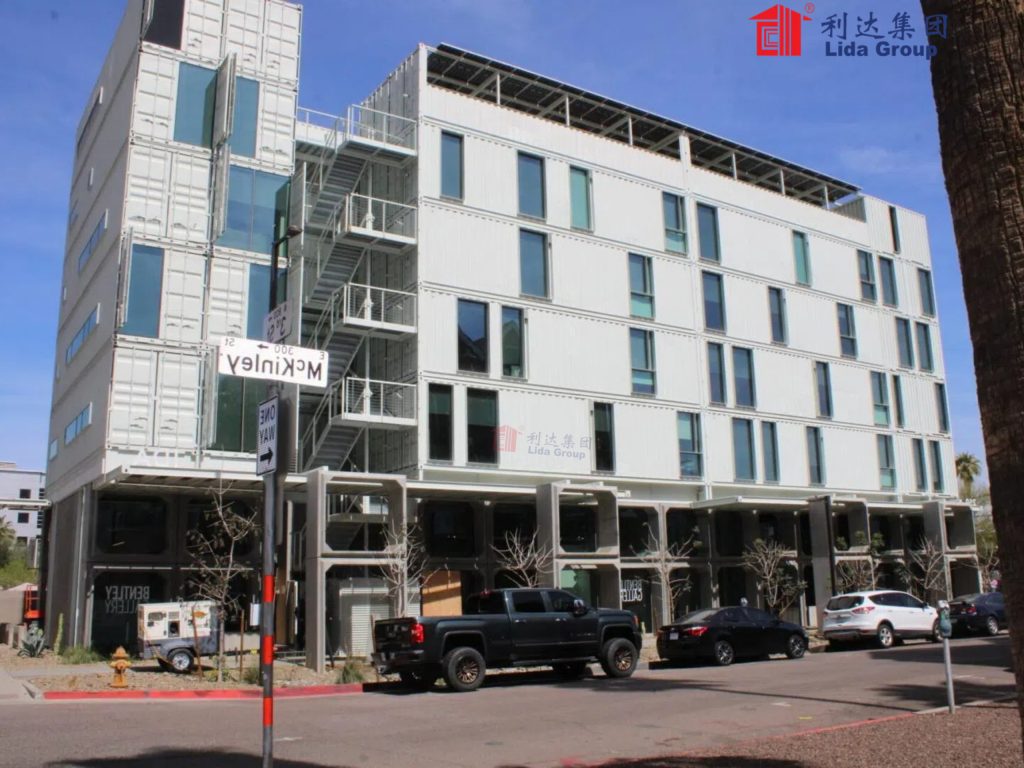**Introduction: The Hidden Cost of Time in Remote Construction**
In the world of large-scale infrastructure, energy, and mining projects, the focus is invariably on the primary objective: building the dam, constructing the processing plant, or laying the pipeline. However, a critical and often debilitating precursor to this main event is the establishment of infrastructure for the workforce itself—the labor camp. These temporary cities are not merely ancillary; they are fundamental to project viability. Traditional methods of constructing these camps, using brick, mortar, or low-quality pre-cast concrete, are notoriously slow, inefficient, and costly. The prolonged timeline from project initiation to workforce mobilization represents a significant financial drain, delaying revenue generation and inflating overall project budgets.
The adage “time is money” is nowhere more acutely felt than in remote site development. Every day lost to weather delays, logistical bottlenecks, and slow on-site construction has a tangible and substantial cost: interest accruing on project financing, idled equipment, and the lost productivity of a workforce that cannot be mobilized. It is within this high-stakes context that Lida Group‘s prefabricated container building approach emerges not just as an alternative construction method, but as a powerful strategic tool for financial and operational management. By fundamentally re-engineering the construction process through off-site fabrication, Lida delivers unparalleled cost-effectiveness, primarily by dramatically cutting labor camp construction timelines and introducing sweeping efficiencies across the project lifecycle. This article examines the mechanisms behind this approach and its profound impact on the total cost of project ownership.

**Chapter 1: Deconstructing the Cost of Traditional Labor Camp Construction**
To appreciate the value proposition of prefabrication, one must first understand the cost drivers of traditional methods.
1. **Prolonged Timelines and Indirect Costs:** The single greatest cost of traditional building is time. A site-built camp can take 6 to 12 months to complete. During this period, projects incur:
* **Financing Costs:** Capital for the project is tied up and accruing interest without any return.
* **General Conditions & Overheads:** Project management, site supervision, security, and temporary utilities must be maintained for the entire duration.
* **Idled Resources:** Heavy machinery and management teams may be on-site but unable to begin primary work.
2. **Labor Inefficiency and Inconsistency:** On-site construction is plagued by productivity variables.
* **Weather Dependencies:** Rain, extreme heat, high winds, and snow can halt work for days or weeks, creating schedule uncertainty and cost overruns.
* **Skilled Labor Shortages:** Remote sites often lack access to a skilled local labor pool, requiring higher wages and per-diems to attract workers, alongside costs for their accommodation.
* **Quality Inconsistency:** Variability in workmanship leads to rework, defects, and future maintenance issues, adding hidden long-term costs.
3. **Material Waste and Logistics:** Transporting bulk materials like cement, gravel, bricks, and timber to a remote location is extraordinarily expensive. Furthermore, on-site construction generates significant material waste (often 20-30%), for which the project bears both the material cost and the disposal cost.
4. **Unpredictable Final Costs:** Due to weather, rework, and logistical challenges, final costs for traditional builds are notoriously difficult to predict and control, often exceeding initial budgets by a significant margin.
**Chapter 2: The Prefabrication Paradigm: Manufacturing Efficiency Meets Construction**
Lida Group’s approach applies the principles of manufacturing—precision, repetition, and controlled processes—to the built environment. This shift from a *construction-site* model to a *factory-production* model is the core of its time and cost savings.
**2.1. Parallel Processes: The Ultimate Time-Saver**
The most significant timeline reduction comes from executing tasks in parallel rather than in sequence.
* **Traditional (Sequential):** Site preparation → Foundation work → Material delivery → On-site construction → Interior finishing → Utility connection.
* **Lida Group (Parallel):**
* **Factory:** Module design and engineering → Fabrication of structure → Interior finishing → MEP integration → Quality inspection.
* **Site:** Site preparation → Foundation work → Utility trenching.
The factory and site work occur simultaneously. By the time the site is prepared, the finished modules are ready for immediate installation. This parallel process can reduce the overall project timeline by **50-70%**. A camp that would take 8 months to build traditionally can be completed and occupied in 3 months.
**2.2. Controlled Factory Environment: Eliminating Variables**
The factory is a controlled ecosystem optimized for efficiency and quality.
* **Weather-Independent Production:** Work continues uninterrupted 24/7, regardless of external weather conditions at the final project site. This eliminates a primary source of schedule uncertainty.
* **Optimized Labor Efficiency:** Skilled workers are stationed permanently in the factory, performing specialized tasks in an ergonomic setup. This eliminates travel time, reduces fatigue, and dramatically increases productivity per worker hour compared to a chaotic site environment.
* **Just-In-Time Material Procurement:** Materials are purchased in bulk for multiple projects, securing better prices. They are delivered directly to the factory floor, eliminating on-site storage costs and waste from weather damage or theft.
* **Drastically Reduced Waste:** Precision manufacturing using Computer Numerical Control (CNC) machines for cutting and drilling ensures material optimization. Off-cuts can be recycled within the factory system. Waste is typically reduced to below **10%**.

**Chapter 3: The Mechanics of Speed: On-Site Assembly Revolution**
The on-site phase is transformed from a lengthy construction process into a rapid assembly operation.
**3.1. Simplified Foundations:**
Container modules are structurally self-sufficient. They require only simple, low-profile foundations compared to the deep, continuous foundations needed for traditional buildings. This typically involves:
* **Concrete piers** or pads at the four corners of each module.
* **Helical piles** screwed into the ground, which are incredibly fast to install and require no curing time.
This foundation work is swift, uses less material, and is completed in a fraction of the time.
**3.2. Plug-and-Play Modular Installation:**
The modules arrive on-site as complete, finished products.
* **Rapid Craning:** Using mobile cranes, modules are lifted from transport trucks and precisely positioned onto their foundations in a matter of minutes per unit.
* **Bolted Connections:** Modules are secured to the foundations and to each other using high-strength, pre-engineered bolted connection systems. This is a fast, simple, and incredibly strong mechanical process.
* **Integrated Utility Hookups:** As the modules are placed, teams connect the pre-installed MEP (Mechanical, Electrical, and Plumbing) lines to the pre-prepared site utilities. Because all connections are pre-planned and standardized, this process is methodical and swift.
**Chapter 4: Quantifying the Cost-Effectiveness: A Multi-Dimensional Analysis**
The cost savings of Lida’s approach are holistic, impacting both direct and indirect cost centers.
**4.1. Direct Cost Savings:**
* **Reduced Labor Costs:** Although factory labor is skilled, the sheer efficiency of the process and the shorter on-site duration require far fewer total labor hours. The need for a large on-site crew living in temporary facilities is eliminated.
* **Lower Material Costs:** Bulk purchasing power and vastly reduced waste translate directly into lower material costs per unit.
* **Reduced Foundation Costs:** The simplified foundation system requires less concrete, less excavation, and less labor.
**4.2. Indirect and Financial Cost Savings (The True Game-Changer):**
* **Earlier Revenue Generation:** This is the most significant financial benefit. If a billion-dollar mine or plant can begin operations just one month earlier because the workforce was housed faster, the revenue generated in that month can dwarf the entire cost of the labor camp.
* **Reduced Financing Costs:** A shorter project lifecycle means less time paying interest on construction loans, freeing up capital.
* **Predictable Budgeting:** A fixed-price contract for factory-produced modules eliminates the risk of cost overruns due to on-site surprises, allowing for precise financial forecasting.
* **Lower Overhead Costs:** General conditions, site management, and security costs are incurred over a much shorter period.
**4.3. Lifecycle Cost Savings:**
* **Durability and Low Maintenance:** The high-quality, factory-controlled construction results in a more durable product with fewer defects. The use of robust materials like galvanized steel and high-quality insulation reduces long-term maintenance and repair costs.
* **Energy Efficiency:** Superior insulation and airtight construction dramatically lower the energy required for heating and cooling, providing ongoing operational cost savings for the life of the camp.
* **Relocation and Reuse Value:** At the end of a project, the camp can be disassembled, relocated, and redeployed on a new project. This residual value is a tangible asset, whereas a traditional site-built camp is often a sunk cost, demolished and abandoned.

**Chapter 5: Case Study: Illustrating the Timeline and Cost Advantage**
**Project:** A mining camp in Western Australia for 500 personnel.
**Traditional Build Estimate:**
* **Timeline:** 9 months
* **Direct Construction Cost:** AUD $25 million
* **Indirect Costs (Overheads, financing during construction):** AUD $3.5 million
* **Total Cost to Complete:** **AUD $28.5 million**
* **Project Delay:** Primary mine work cannot begin until Month 9.
**Lida Group Prefab Container Build:**
* **Timeline:** 4 months (Factory fabrication: 3 months [concurrent with 2 months of site prep]; On-site assembly: 2 months)
* **Direct Construction Cost:** AUD $22 million
* **Indirect Costs (Shorter period):** AUD $1.5 million
* **Total Cost to Complete:** **AUD $23.5 million**
* **Project Acceleration:** Primary mine work can begin by Month 4.
**Financial Impact:**
* **Direct Savings:** AUD $5 million (AUD $28.5M – $23.5M)
* **Value of Early Production:** If the mine generates AUD $5 million per month in net revenue, the 5-month earlier start generates **AUD $25 million** in additional revenue.
* **Total Financial Benefit:** **AUD $30 million** (Savings + New Revenue)
This simplified example starkly illustrates how cost-effectiveness transcends the initial sticker price and is overwhelmingly defined by the value of time.

**Conclusion: Redefining Value in Workforce Housing**
Lida Group’s prefabricated container building approach represents a fundamental evolution in the economics of remote workforce housing. It moves the industry beyond a narrow focus on upfront per-square-meter costs and forces a strategic reconsideration of the total cost of ownership and the immense financial value of time.
By cutting construction timelines by more than half through parallel factory production and rapid on-site assembly, Lida delivers direct cost savings in labor and materials. More importantly, it unlocks transformative indirect financial benefits: slashed overhead and financing costs, perfect budget predictability, and, most crucially, the ability to accelerate the primary revenue-generating project.
This methodology redefines workforce housing from a necessary cost center into a strategic investment that actively contributes to project profitability. It provides project developers and owners with a powerful tool to de-risk their ventures, protect their capital, and optimize their return on investment. In an industry where margins are tight and timelines are critical, Lida Group’s cost-effective, time-saving solution is not just an option; it is the superior business decision for any enterprise looking to build efficiently and compete effectively in the global market.

Related news
-
Engineered for Extreme Conditions: Lida Group's Container Labor Camp Withstands Harsh Environments with Durable Designs
2025-09-17 17:21:20
-
Transforming Remote Site Living: Lida Group's Prefab Container Building Systems Offer Unmatched Labor Camp Comfort
2025-09-17 16:36:13
-
Lida Group's Advanced Engineering Ensures Rapid Assembly of High-Quality Container House Complexes for Labor Camps
2025-09-17 15:53:24
contact us
- Tel: +86-532-88966982
- Whatsapp: +86-13793209022
- E-mail: sales@lidajituan.com


